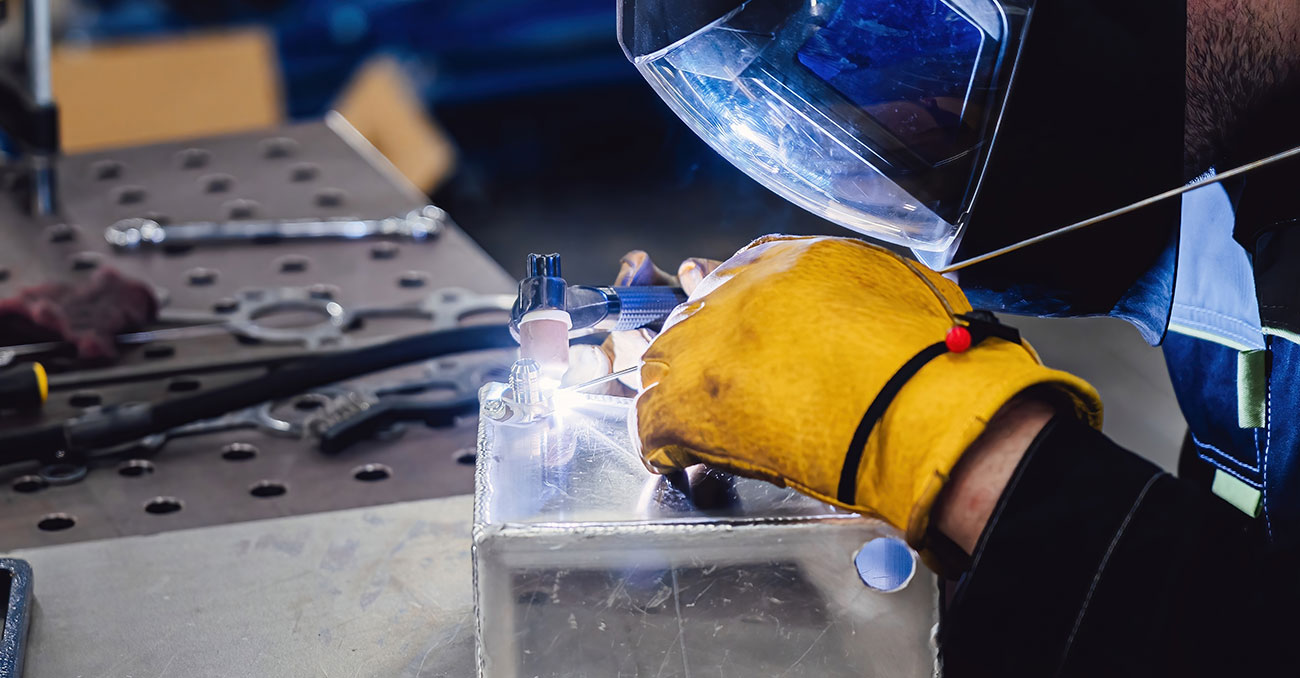
07 Oct Aluminum Welding & Architectural Craftsmanship | Training the Next Generation at Astro
At Astro, we’re always looking ahead — not just to the next project, but to the next generation of makers who will shape the built environment. One of the most rewarding ways to invest in that future is by teaching aluminum welding to students and apprentices.
While aluminum is often seen as a lightweight, industrial metal, mastering it requires precision, patience, and a sharp understanding of how heat and structure interact. And in architectural applications, that knowledge becomes the difference between a panel that fits perfectly and a finish that warps or discolors under stress.
Why Aluminum Welding Matters in Architectural Metalwork
Architectural aluminum isn’t about mass production — it’s about refinement. From decorative ceiling baffles to precision façade panels and furniture-grade trim, aluminum plays an increasingly vital role in modern design.
But working with it presents unique challenges:
- High thermal conductivity demands control and restraint — even slight overheating can distort a part.
- Oxidation sensitivity requires meticulous surface preparation before every weld.
- Finish integrity must be preserved throughout fabrication, since aluminum’s clean lines and reflective surfaces are often part of the visual language of the space.
For young welders and new fabricators, these challenges build both discipline and respect for material.
Translating Technique into Design Excellence
When Astro trains new team members on aluminum, the lesson goes beyond welding technique. We focus on the relationship between craftsmanship and design performance.
Each piece of metal must:
- Hold precise dimensions within architectural tolerances
- Maintain clean visual seams, even under light reflection
- Integrate structurally and aesthetically with glass, wood, or stone
These details are what separate industrial welds from architectural metalwork — and they’re what make Astro’s pieces stand out once installed.
“When you teach aluminum welding, you’re not just passing on a skill — you’re teaching attention to detail, restraint, and pride in the process,” says Steve Paxton, President of Astro. “Those traits are what turn a good fabricator into a great one, and they’re the foundation of every architectural metal project we deliver.”
Mentorship and Education Inside the Shop
We believe education doesn’t just happen in classrooms. It happens in every project cycle — from a first TIG bead to a full-scale mockup.
At Astro, we encourage experienced craftsmen to mentor the next wave of fabricators, walking them through:
- Proper joint prep and fixture setup
- Controlled heat techniques to minimize distortion
- Post-weld finishing to achieve seamless visual integration
- Real-world troubleshooting on active projects
This culture of learning ensures that skill and craftsmanship remain core to our identity — not just our output.
Closing Thoughts
As design continues to demand lighter, cleaner, and more expressive metalwork, aluminum is taking center stage. The future of architectural fabrication depends on how well we train those who will build it.
At Astro, that means hands-on learning, technical mastery, and the same precision that defines every weld, finish, and form that leaves our shop.


